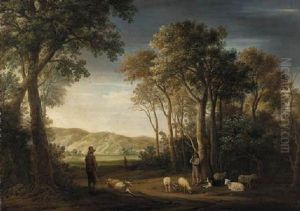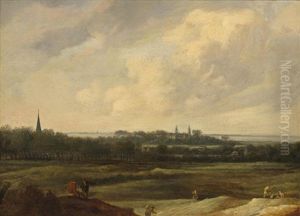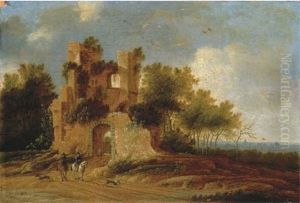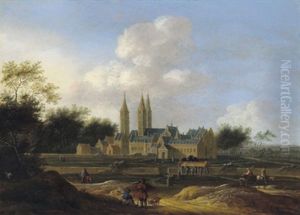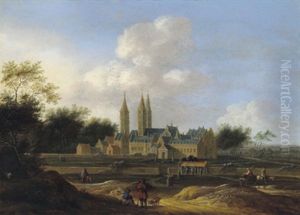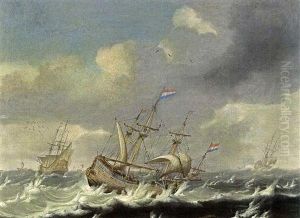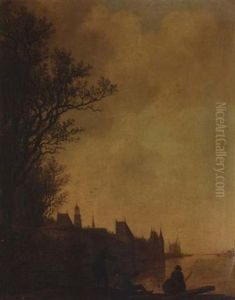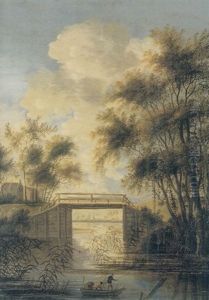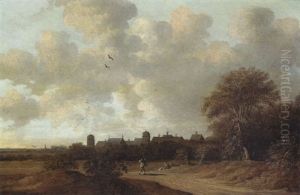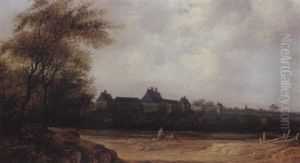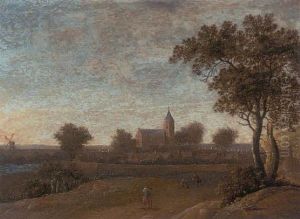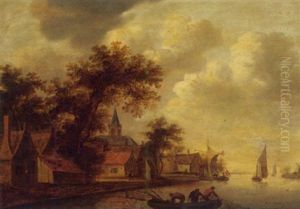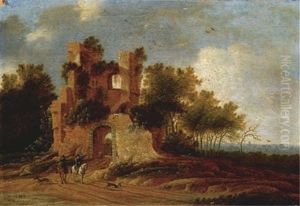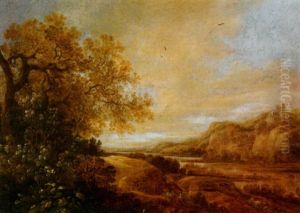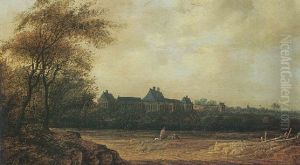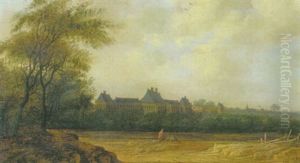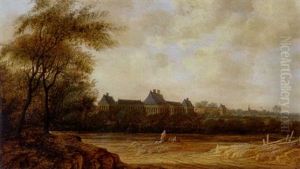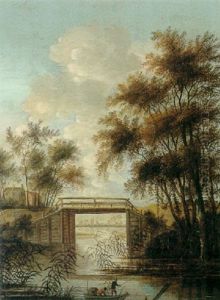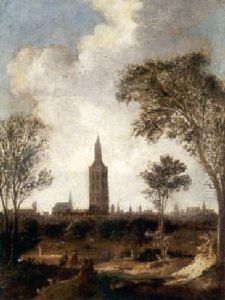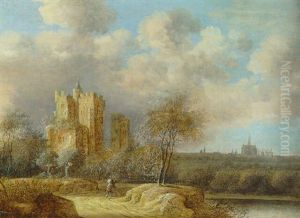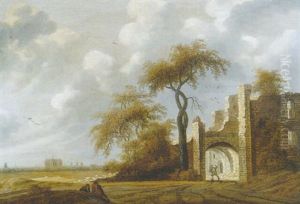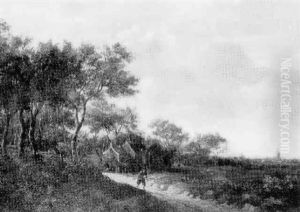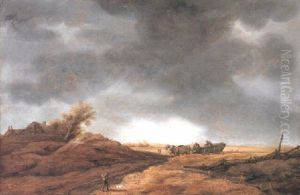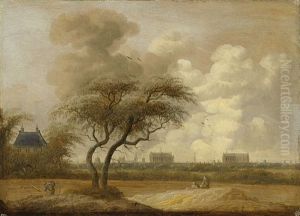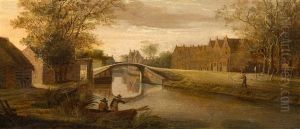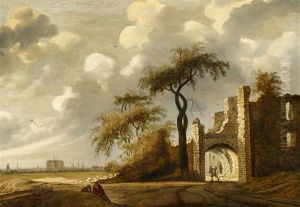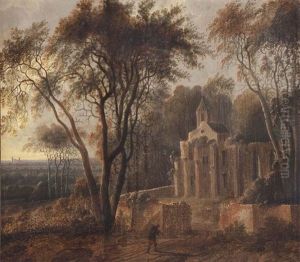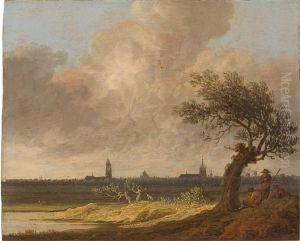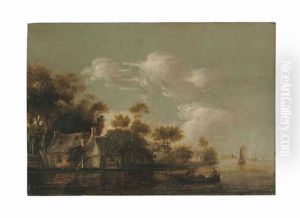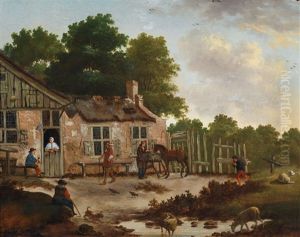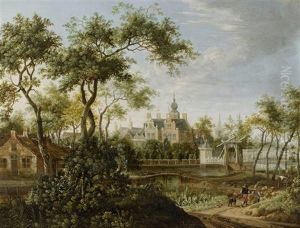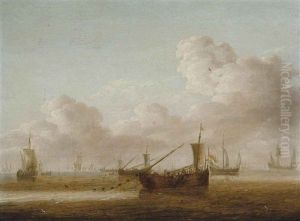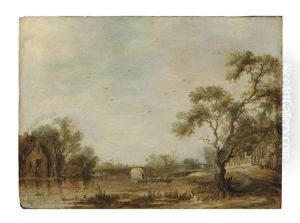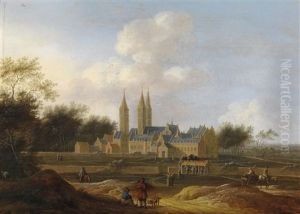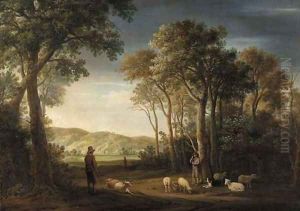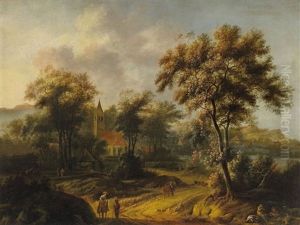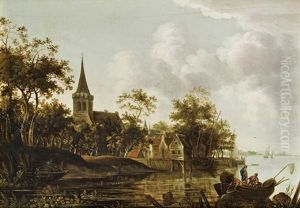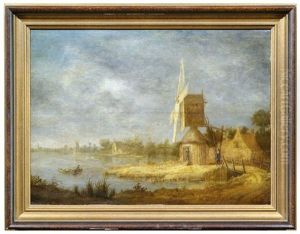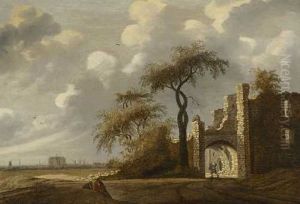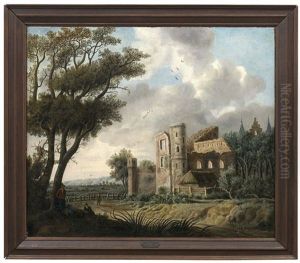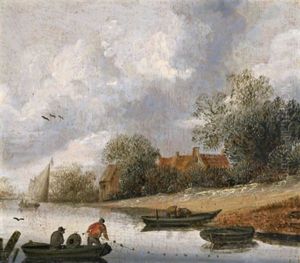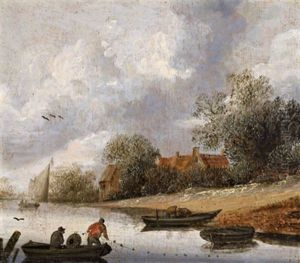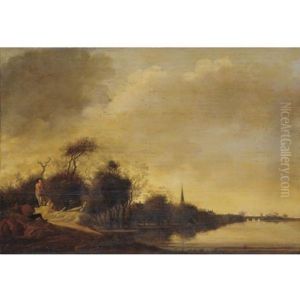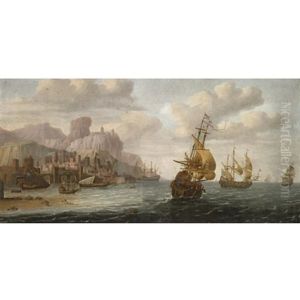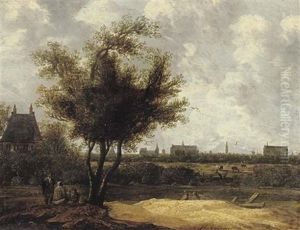Jacob Van Der Croos Paintings
Jacob van der Croos was a Dutch Golden Age landscape painter whose career spanned the middle part of the 17th century. Born in The Hague in 1639, he was part of a family of artists; his father, Anthonie Jansz. van der Croos, was also a landscape painter, and his brother, Hans, worked as an art dealer. Jacob's upbringing in this artistic environment undoubtedly influenced his decision to pursue painting.
Jacob van der Croos specialized in landscapes that often included water scenes, such as rivers and canals, which were characteristic of the Dutch landscape. His works are noted for their serene and idyllic qualities, with a meticulous attention to the subtleties of natural light and atmosphere. Van der Croos's landscapes typically feature expansive skies, calm waters, and a sense of peaceful rural life, which were subjects that resonated with Dutch art collectors of the time.
Despite his considerable skill, Jacob van der Croos did not achieve the same level of fame as some of his contemporaries such as Jacob van Ruisdael or Meindert Hobbema. Nevertheless, he was a respected artist in his day, and his paintings were collected by those who appreciated the tranquil and pastoral moods he captured. He was also influenced by the works of Jan van Goyen, a prominent Dutch landscape artist of the era, and often incorporated van Goyen's tonal style into his own compositions.
Jacob van der Croos passed away in 1689. While his works may not be as widely recognized today as those of the leading Dutch Masters, they remain valuable contributions to the Dutch landscape genre and continue to be appreciated for their quiet beauty and technical proficiency.
